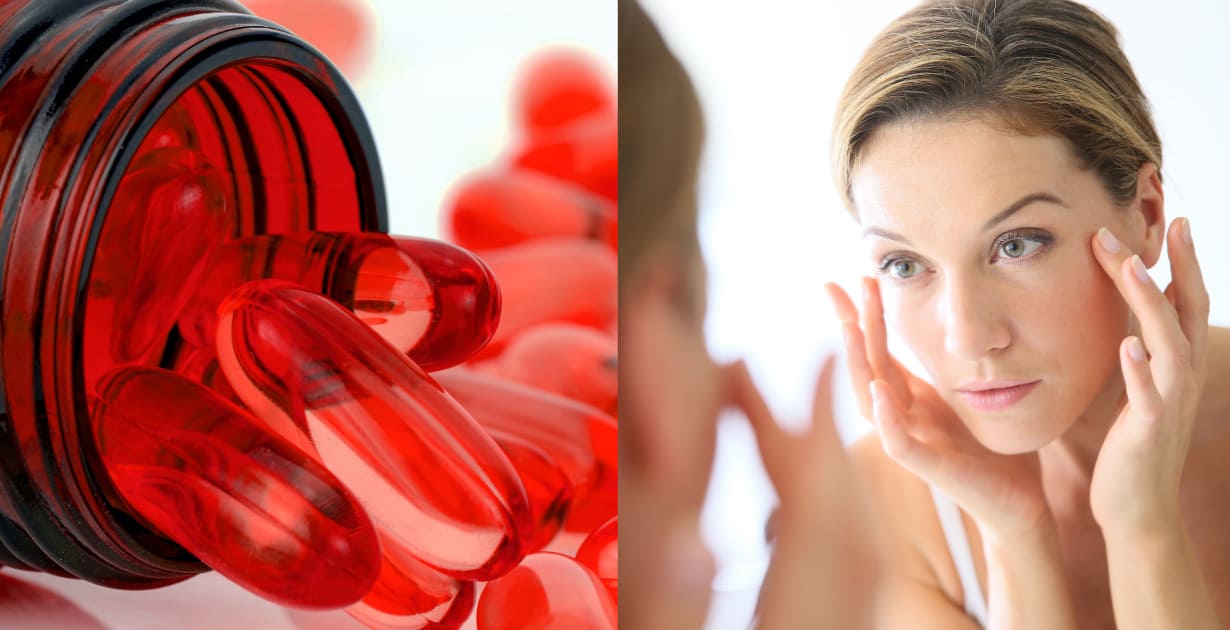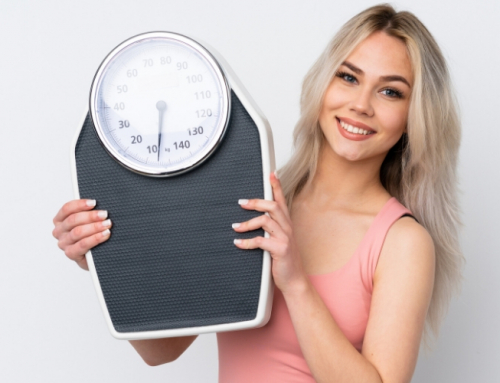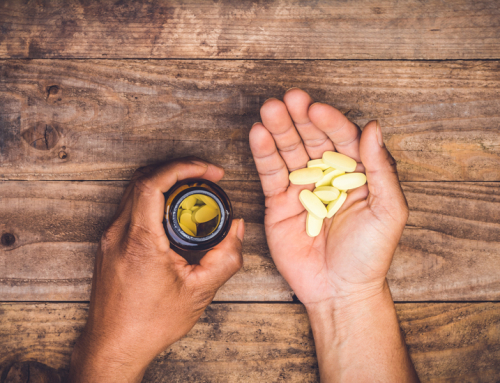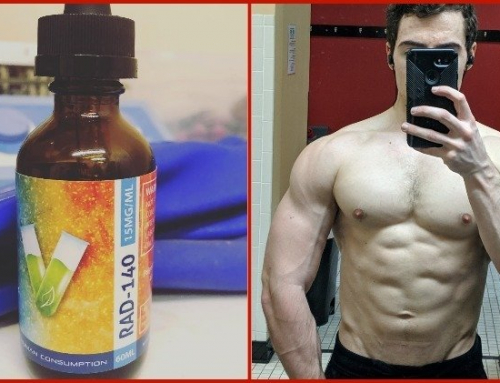Astaxanthin is a red pigment found in fish, fish, plus a few microalgae. It’s a potent antioxidant that may help with skin aging, cardiovascular disease, protect the mind, and regulate the immune system. Read this informative article to learn more about the possible benefits of astaxanthin and how it may help optimize your health.
What’s Astaxanthin?
Astaxanthin (AST) is a naturally-occurring pigment carotenoid found in algae, shrimp, lobster, crab, and salmon.
Astaxanthin is created by the green microalgae Haematococcus Pluvialis, Chlorella zofingiensis, and Chlorococcum, in addition to the yeast Phaffia rhodozyma.

The green algae H. Pluvialis make high amounts of this antioxidant pigment when subjected to unfavorable conditions (for example, high UV exposure) to decrease the damage from free radicals.
Animals that eat these microalgae or yeast consume astaxanthin. This is the reason wild fish, lobster, crab, and salmon have bright red-orange colors. Wild salmon can comprise up to 26-38 mg of astaxanthin per kg of body fat, whereas farmed Atlantic salmons typically have only 6-8 mg.
Even though it’s also a carotenoid, astaxanthin is not converted to vitamin A in the human body. Like other carotenoids, astaxanthin has self-limited oral absorption. Very high doses (around 465 mg/kg/day for men and 557 mg/kg/day for female) caused no toxicity signs in rats.
However, overconsumption of astaxanthin can turn creature skin and cells red, which is why astaxanthin is used in feed for farmed seafood and fish.
Pharmacokinetics
Astaxanthin is an extremely fat-soluble substance, meaning that it is better absorbed when consumed fat.
When astaxanthin is consumed, it is digested and absorbed in a similar fashion as fat (it’s assembled into chylomicrons). The chylomicrons are absorbed to lymph flow before remnants of astaxanthin are digested by lipoprotein lipases. Astaxanthin is then assimilated into lipoprotein particles to get transported into tissues.
This means astaxanthin can more easily alter the metabolism of fat and cholesterol, particularly when it relates to cardiovascular health.
In rats, ingested astaxanthin was metabolized by first-pass liver metabolism primarily by the CYP450 enzyme.
Astaxanthin was identified in most cells, but not in the heart.
Snapshot
Proponents
- Antioxidant and immunomodulatory
- May shield the skin
- Might Aid with exercise fatigue
- May decrease the risk of heart disease
- May shield the mind
- Few adverse effects reported
Skeptics
- Insufficient evidence for most advantages
Benefits
As an antioxidant, astaxanthin is 10 times stronger than zeaxanthin, lutein and beta-carotene, and 100 times stronger than vitamin E.
The arrangement of astaxanthin lets it enter cell membranes or remain out of cell membranes, enabling it to protect cell membranes from the inside and outside the cell.
Possibly Evidence for:
Skin Aging
In a small study on 30 women and 36 men, a treatment combining oral and topical astaxanthin decreased wrinkles and age spots while improving skin elasticity, texture, and moisture. Oral astaxanthin alone had comparable effects in another trial on 34 middle-aged individuals.
Supplementing with astaxanthin and collagen hydrolyzate improved skin elasticity and elasticity while reducing the production of 2 proteins that break down collagen (MMP-1 and MMP-12) in response to UV radiation at a clinical trial on 44 healthy men and women. In a second trial on 23 people, oral astaxanthin reduced skin redness and reduction of moisture following UV irradiation while improving its texture.
In mice, astaxanthin averted skin thickening, hydration decrease, and melanin production in response to UV.
In skin cells exposed to UVA radiation, astaxanthin reduced the induced production of 2 proteins that break down collagen (MMP-1 and SFE/NEP) and also a pro-inflammatory cytokine (IL-6). This suggests that astaxanthin could protect against UVA-induced skin photoaging like sagging and wrinkles.
Although limited, the existing evidence indicates that astaxanthin can protect the skin from aging and UV radiation. You might discuss with your doctor if it may be useful as a complementary strategy in your case.
Insufficient Evidence for:
1) Slimming Exercise Fatigue
In a small trial on 21 cyclists, oral astaxanthin improved power output and time trial operation.
In a clinical trial on 40 male football players, oral astaxanthin improved the antioxidant status by boosting the activity of an antioxidant enzyme (PON1). Similarly, another trial on 32 male soccer players discovered that supplementation with astaxanthin improved antioxidant status and decreased muscle damage after exercise.
But, two trials on 64 well-trained male cyclists found that supplementation with astaxanthin didn’t enhance the antioxidant status, fat usage, and exercise performance. In addition, astaxanthin failed to decrease muscle damage after exercise in another trial on 20 well-trained people.
The antioxidant effects of astaxanthin significantly delayed exhaustion in a forced swimming test in rats.
In dogs, eating a protein bar with astaxanthin immediately after physical exercise improved protein and glycogen production, thus helping replenish their energy stores.
A few small clinical trials (with mixed results) and a few animal research are insufficient to claim astaxanthin reduces exercise fatigue. Larger, more robust clinical trials are required to shed some light on this potential benefit.
2) Reducing the Risk of Heart Disease
At a clinical study on 27 overweight people, supplementation with astaxanthin lowered”bad” cholesterol (LDL and ApoB) and oxidative damage, potentially reducing the risk of clogged arteries. In the same way, oral astaxanthin decreased LDL oxidation in a clinical trial on 20 healthy volunteers.
In another trial on 61 individuals with mildly large blood fat levels, astaxanthin decreased triglycerides while increasing”good” HDL cholesterol and a protein that boosts fat breakdown (adiponectin).
In mice, astaxanthin postponed and decreased blood clotting in the blood vessels, while raising blood circulation.
In rats, rabbits, and dogs, pre-treatment with synthetic astaxanthin decreased the damage caused by heart attacks in heart tissues.
Blood isolated from 20 individuals given astaxanthin showed reduced blood clotting markers, suggesting it might help prevent heart disease from blood clots.
Even though the results are promising, 3 clinical trials along with a few animal research can’t be considered sufficient proof to attest to the possible capability of astaxanthin to stop cardiovascular disease. More clinical trials on larger populations are needed.
3) Cognitive Function
In 2 clinical trials on 45 individuals, supplementation with the antioxidants astaxanthin and sesamin reduced mental fatigue and enhanced cognitive functions about the capability to comprehend and execute complicated tasks quickly and accurately (psychomotor and processing speed).
Astaxanthin enhanced the antioxidant status of red blood cells in a small study on 30 middle-aged and elderly men and women. This led to a reduced buildup of oxidized fats (phospholipid hydroperoxides) within their cell membranes, and it can be a risk factor for developing dementia.
In rats, it postponed brain aging by reducing oxidative damage and raising the levels of a protein that boosts the birth of new brain cells (BDNF).
Pre-treatment with high doses (80 mg/kg) of astaxanthin considerably reduced brain damage from a stroke in rats.
Mice pre-treated with astaxanthin performed better in a learning performance evaluation after a stroke. In the same way, it decreased brain swelling and sped up healing after a traumatic brain injury in mice.
Astaxanthin protected brain cells in beta-amyloid-induced toxicity, suggesting it may protect against Alzheimer’s disorder.
Again, just 3 clinical trials (two of that combined astaxanthin with sesamin) and some creature and cell-based research have been conducted. More clinical research is needed to confirm these preliminary results.
4) Diabetes
In a clinical trial on 44 people with type 2 diabetes, supplementation with astaxanthin for 2 weeks improved blood sugar control (measured as reduced fructosamine and sugar amounts ), improved blood glucose profile, and reduced blood pressure.
In the same way, astaxanthin improved insulin sensitivity in mice and rats on high fat and high-sugar diets.
Generally, high blood glucose causes elevated levels of oxidative stress in diabetic patients. Astaxanthin can protect pancreatic β-cells (which produce insulin) from oxidative stress caused by high blood sugar, as seen in diabetic mice.
It also reduced cell damage because of glucose-triggered oxidative stress in brain and kidney cells, implying it can prevent diabetic neuropathy and nephropathy.
Just one clinical trial and some creature and cell-based research cannot be considered adequate evidence that astaxanthin improves diabetes. Further clinical research is necessary.
5) Fatty Liver Disease
In a pilot study on 12 individuals with non-alcoholic fatty liver disease, supplementation with astaxanthin had no effect on liver function or glucose and fat metabolism, but it reduced fat buildup in the liver.
In the exact same study, astaxanthin was more effective than vitamin E at preventing and improving fatty liver in mice fed a high-fat diet. It decreased fat buildup, liver inflammation, and tissue scar.
An extremely small clinical trial plus research in mice is clearly insufficient to assert that astaxanthin enhances liver disorder. Further clinical trials larger populations are needed to confirm these preliminary findings.
6) Modulating the Immune Responses
Supplementation with 2 mg astaxanthin for 2 weeks enhanced immune response and reduced the creation of an inflammatory marker (CRP) in a clinical trial on 42 young healthy girls.
Astaxanthin supplementation enhanced antibody production and decreased immune response in older animals.
Mixed astaxanthin and fish oil supplementation modulate lymphocyte role in rats.
Again, only one clinical trial and also some animal studies are carried out. More study in humans is required to draw conclusions on the possible ramifications of astaxanthin on the immune function.
Animal and Cellular Research (Lack of Evidence)
No clinical evidence supports the use of astaxanthin for any of the states listed in this part. Below is a summary of the existing creature and cell-based research, which should guide further investigational efforts. On the other hand, the research shouldn’t be interpreted as encouraging of any health benefit.
Stomach Ulcers
Cell extracts of Haematococcus and Chlorococcum significantly reduced the number of H. pylori and gut inflammation in H. pylori-infected mice.
Mice pretreated with astaxanthin before ulcer induction had significantly fewer stomach ulcers.
Cancer
Below, we’ll explore some preliminary research on astaxanthin’s potential anticancer effects. It’s still in the animal and mobile stage and further clinical trials have yet to determine whether its extract could be useful in cancer therapies.
Don’t under any circumstances try to replace traditional cancer treatments with magnolia bark or any other supplements. If you want to use it as a reassuring measure, talk to your physician to avoid any unexpected interactions.
In mice and rats with the chemically-induced mouth, colon, liver, breast, and soft tissue cancer, astaxanthin inhibited tumor formation and growth.
In cell-based studies, astaxanthin inhibited the growth of colon, fibrosarcoma, breast, and prostate cancer cells and embryonic fibroblasts by triggering tumor-suppressor genes such as p53.
Negative Effects & Dosage
Side Effects
Remember that the safety profile of astaxanthin is relatively unknown, given that the absence of clinical studies. The list of side effects below isn’t a certain one and you should speak to your physician about other possible side effects based on your health condition and potential medication or nutritional supplements.
Astaxanthin is deemed probably safe when ingested in food dosages and maybe safe when consumed as a supplement.
In a clinical trial, a couple of negative effects such as cold, nausea, and nausea were observed. However, their frequency has been similar in the placebo and treatment groups.
Dosage
Because astaxanthin is not accepted by the FDA for any condition, there’s absolutely no official dose. Users and nutritional supplement manufacturers have established unofficial dosages based on trial and error. Discuss with your health care provider if astaxanthin might be useful as a complementary approach to your case and which dose you should take.
Beneficial results are observed at 2 mg in humans with dose-dependent effects at 8 milligrams.
No signs of toxicity were found at very high doses (over 500 mg/kg of body fat ) in mice.
